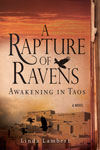« Book Give-Away! Cairo Cats | Do fictional characters have to be fictional? »
The Great Topeka Tornado of June 8, 1966
Unlike the tragic victims of the Oklahoma tornadoes, we were safe. Our housing development in suburban Topeka was built at the foot of Burnett’s Mound, an Indian burial ground named after Potawatomi Chief Abram Burnett, that had protected the area for hundreds of years. The theory was simple. If a tornado approached from the southeast, it would simply lift off or disintegrate as it raced across the top of the mound.
Two days before, I had graduated from Washburn University. By 7:00 p.m. on June 8 our family, including our four-year old son and five-year old daughter, had bathed and packed for a trip east the following morning. It was raining. The windows were closed. We had gathered near the television in the half-basement to watch the startling storm warnings. Our home, like many others in the area, was designed with a concrete foundation flush with the driveway in front, yet partially embedded in the soil behind.
We felt reassured of our safety by Bill Kurtis, then a small town reporter, but later a well-known CBS anchor, even though he reported that the rapidly forming tornado had struck down a few miles outside of town and was headed for Burnett’s Mound. We stood mesmerized, watching the set when Bill yelled: “It’s on the ground. It’s on the ground! For God’s sake, take cover!” The tornado—now a mile across—had topped the mound, but instead of lifting off, stayed on the ground.
We jumped into action. While I dialed my brother who, with his family, lived in a fragile barracks on campus, my husband lifted a stuffed chair into the miniature half-bath. We edged the children underneath and closed the door behind us, reminding ourselves that a bombing that week in Saigon only had a few survivors—those who had taken shelter in the bathroom.
When the tornado ripped the house off our heads, it was deafening, like a 747 landing on top of us. Everything went dark and time stopped. The plumbing structure above us snapped and water poured into our small space. Later, our children would tell us that their greatest fear was being drowned. We were certain that the event lasted for several minutes, although it was only moments.
The F5 tornado took hundreds homes in our area and stayed on the ground all the way through town. Because windows were closed against the rain, distant neighbors would report that our houses were lifted intact into the air and exploded. The university was stripped of trees and sacred stone buildings. The menace didn’t lift off until it had finished with Topeka, including the downtown. At the time, it was the most expensive tornado in American history.
We learned a great deal that day, and in the days that followed:
- Don’t panic. Remain calm and apply what you know about tornadoes. Our neighbor’s five-year old son was killed when he was pinned to a tree by a two-by-four when the family panicked and raced for their car.
- Stuff doesn’t matter. We lost everything, but all that mattered was that we still had each other. For years to come, we would never cherish things.
- Expect surprises. Our jar of travel monies rolled to the bottom of the non-existent stairs. My Blue Cross insurance card was mailed back from St. Joseph, Missouri. Our tornado insurance policy was stuck on a nail in our front yard.
- Families, friends and communities become closer. People can depend on each other for food, for lodging, for protection. For years, we enjoyed block parties with our neighbors.
- 5. If you live in the “tornado belt,” for God’s sake, buy tornado insurance.
A few years later, when we announced to family and friends that we were moving to California, they cried: “Aren’t you afraid of earthquakes?”
Leave a Reply





 Conceptions of leadership have evolved, and Liberating Leadership Capacity captures these new ideas and provides a pathway to create sustainable systems of high leadership capacity. Available April 2016 from
Conceptions of leadership have evolved, and Liberating Leadership Capacity captures these new ideas and provides a pathway to create sustainable systems of high leadership capacity. Available April 2016 from  A sizzling new novel set in Taos, New Mexico. The third in the Justine Trilogy, preceded by the award-winning, The Cairo Codex and The Italian Letters. Buy it at your local independent bookstore,
A sizzling new novel set in Taos, New Mexico. The third in the Justine Trilogy, preceded by the award-winning, The Cairo Codex and The Italian Letters. Buy it at your local independent bookstore, 
